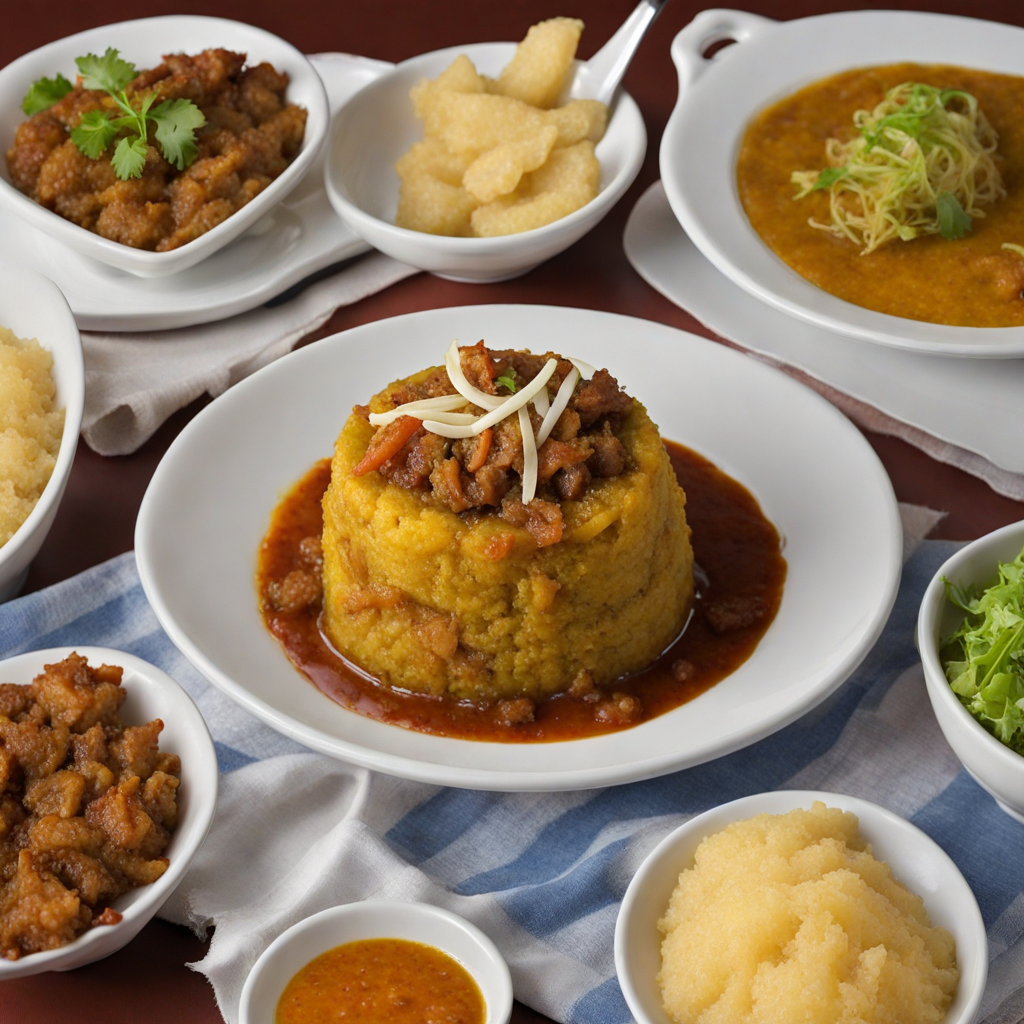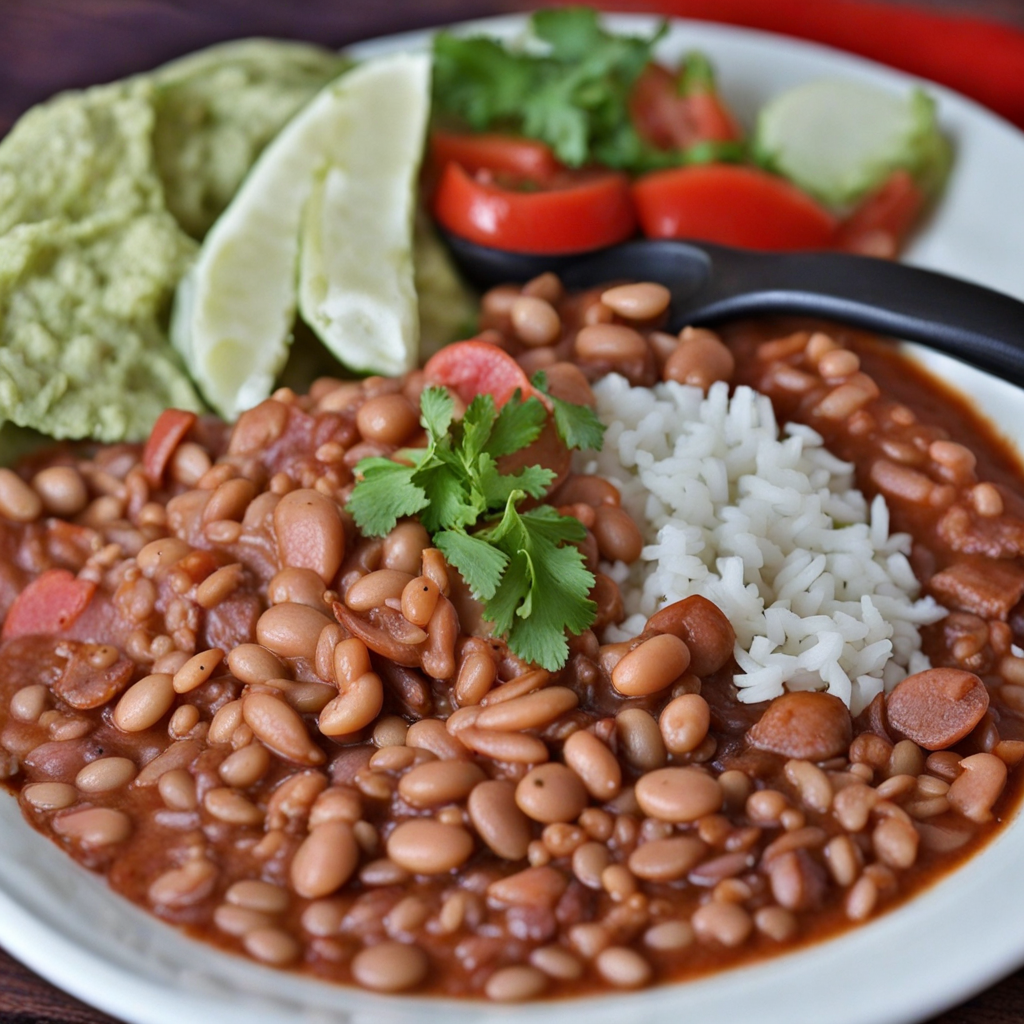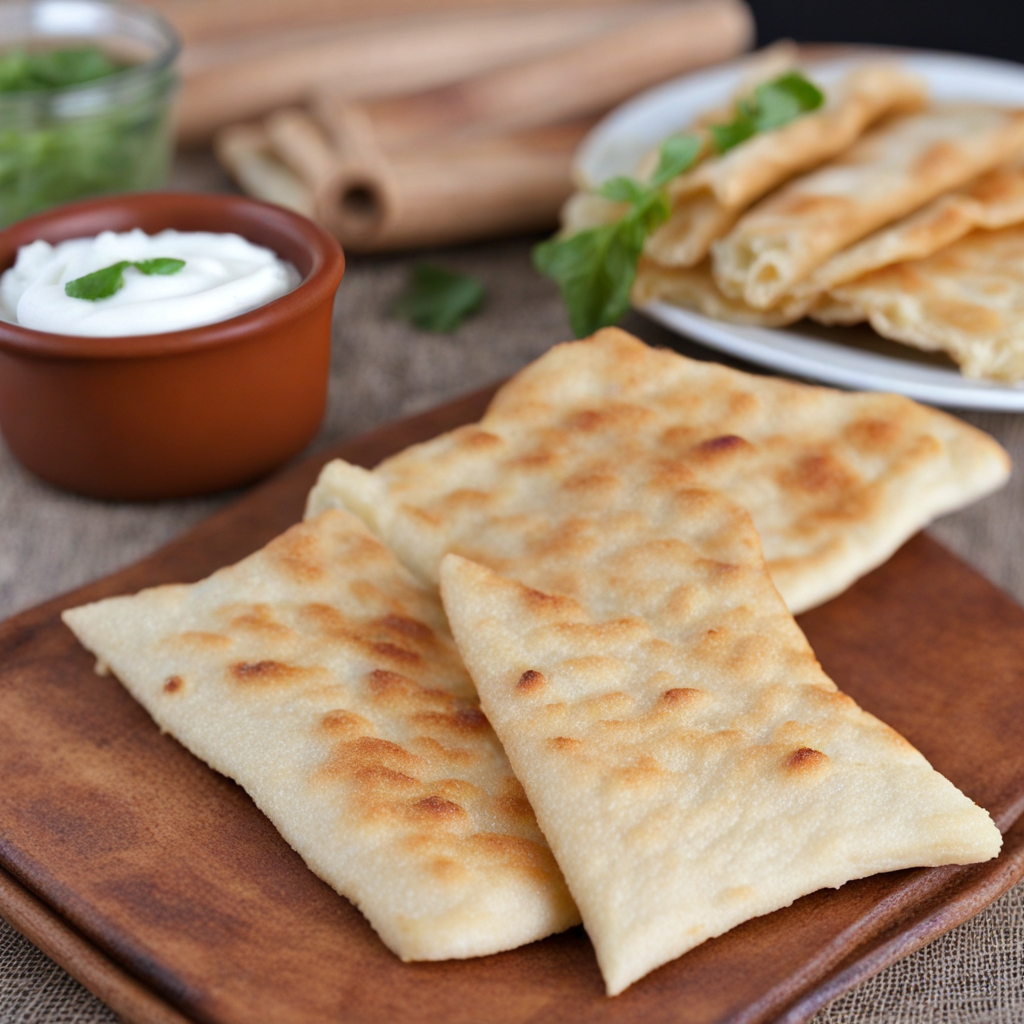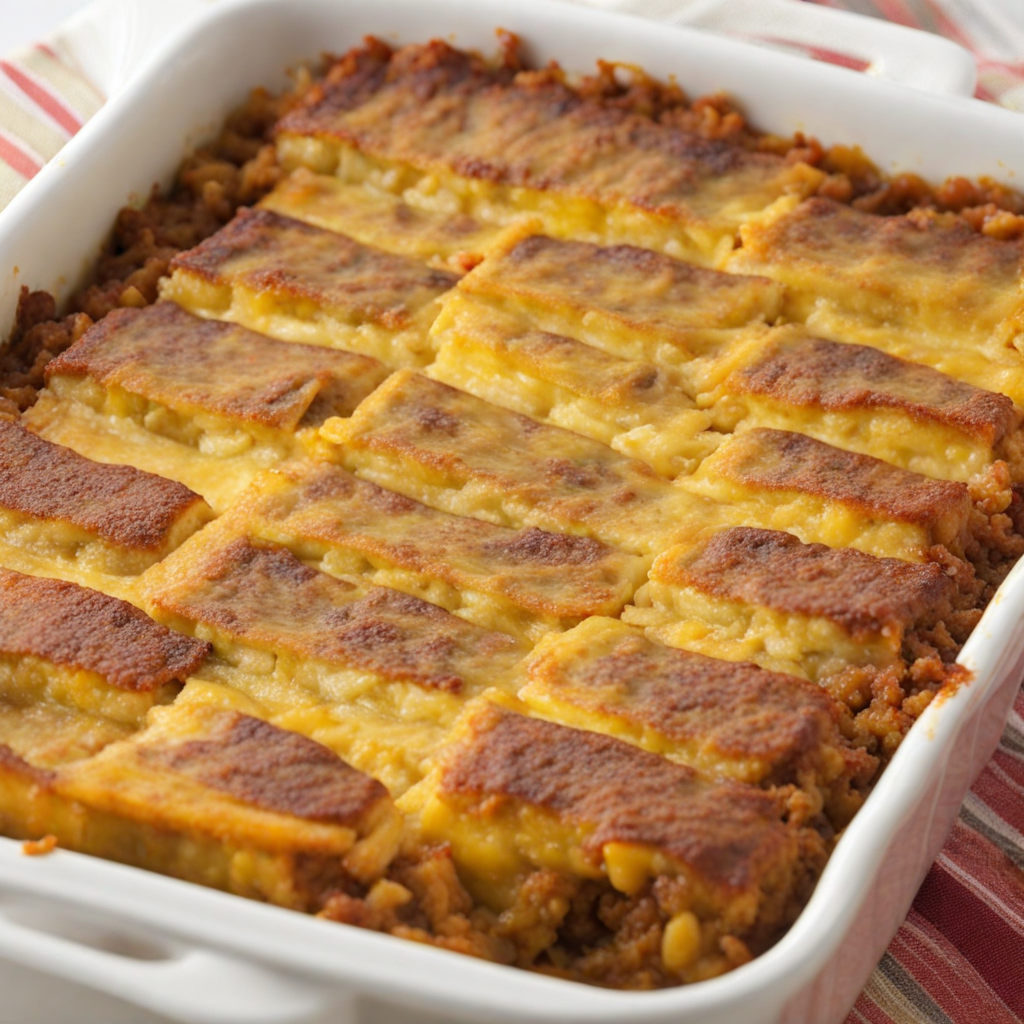Mofongo
Mofongo is a traditional Dominican dish celebrated for its unique combination of flavors and textures. At its core, mofongo is made from green plantains that are fried until golden and then mashed with garlic, olive oil, and chicharrón (crispy pork skin). This process creates a rich, savory base that is both hearty and satisfying. The mashed plantains are molded into a bowl shape, making it perfect for holding various delicious fillings, allowing for a versatile culinary experience that can cater to different palates. The fillings for mofongo can vary widely, but some popular options include shrimp in a garlic sauce, stewed beef, or chicken. Each filling adds its own layer of flavor, which complements the garlicky, starchy base. The dish is often served with a side of broth or a flavorful sauce, which can be poured over the mofongo, enhancing its taste and moisture. This combination of textures—from the creamy insides to the crispy exterior—creates a delightful experience for the senses. Mofongo is more than just a meal; it is a cultural emblem of the Dominican Republic, showcasing the country’s rich culinary heritage. It is often enjoyed during gatherings and celebrations, making it a dish that brings people together. Whether you are savoring it at a local eatery or trying your hand at making it at home, mofongo promises an exciting journey into the flavors of the Caribbean, inviting you to explore the depth and joy of Dominican cuisine.
How It Became This Dish
The History of Mofongo: A Culinary Treasure of the Dominican Republic Mofongo is a dish that embodies the rich cultural tapestry of the Dominican Republic, a nation whose culinary traditions are influenced by a blend of indigenous Taino, African, and Spanish elements. This beloved dish is made primarily from green plantains that are fried and then mashed with garlic, olive oil, and chicharrón (fried pork skin), resulting in a savory and hearty meal. While mofongo is often associated with Puerto Rico, its roots run deep in the Dominican Republic, where it is known as "mangú" when made with boiled green plantains. The evolution of mofongo offers a fascinating glimpse into the island's history, its people, and their culinary practices. #### Origins: A Fusion of Cultures The origins of mofongo can be traced back to the indigenous Taino people, who cultivated plantains and other starchy vegetables long before the arrival of Europeans. Plantains, a staple in the Caribbean diet, were an essential source of sustenance for the Taino. When the Spanish colonizers arrived in the late 15th century, they brought with them their own culinary traditions, including the use of garlic and pork. The fusion of these diverse influences led to the birth of what we now recognize as mofongo. The African diaspora also played a significant role in the evolution of this dish. Enslaved Africans brought to the Caribbean contributed their own cooking methods and flavors, which melded with the existing Taino and Spanish ingredients. The technique of mashing starchy foods—a practice common in various African cuisines—became integral to the preparation of mofongo, resulting in the creamy, yet textured dish we know today. #### Cultural Significance Mofongo is more than just food; it is a symbol of identity and resilience for Dominicans. It serves as a reminder of the island's tumultuous history, marked by colonization, slavery, and the struggle for independence. The dish is often served during family gatherings, celebrations, and holidays, making it a central part of Dominican social culture. In Dominican households, mofongo embodies the spirit of community and togetherness. Preparing the dish is often a collective effort, with family members participating in the process of frying the plantains, mashing them with garlic, and incorporating the chicharrón or other proteins. It is a dish that carries stories and traditions from generation to generation, reinforcing familial bonds and cultural heritage. #### The Evolution of Mofongo Over the years, mofongo has evolved in response to changing tastes, available ingredients, and culinary trends. While the traditional preparation involves frying green plantains, modern interpretations have emerged that cater to health-conscious consumers or those with dietary restrictions. For instance, some recipes now call for baking the plantains instead of frying them, resulting in a lighter version of the dish. Additionally, mofongo has diversified beyond its classic preparation. Creative chefs have experimented with various fillings and toppings, from seafood to vegetables, making it a versatile dish that can adapt to contemporary palates. In urban areas, street vendors and restaurants have embraced these innovations, allowing mofongo to transition from a home-cooked meal to a popular restaurant fare. The dish's popularity has also led to its inclusion in the broader Caribbean culinary scene. While mofongo is deeply rooted in Dominican culture, it has found a place in Puerto Rican cuisine, where it is similarly cherished. This cross-pollination highlights the interconnectedness of Caribbean food cultures and the way in which dishes can evolve and take on new meanings in different contexts. #### Contemporary Mofongo: A Culinary Icon Today, mofongo is widely recognized as a culinary icon of the Dominican Republic and the Caribbean at large. It is celebrated not just for its rich flavors and textures, but also for its cultural significance. The dish has gained international attention, appearing on menus in Latin American restaurants around the world, where it continues to captivate diners with its unique taste and history. In the Dominican Republic, mofongo can be found in various forms, often served with a variety of accompaniments. It may be accompanied by a rich broth, a flavorful sauce, or a side of sautéed vegetables, enhancing the dining experience. Restaurants often offer mofongo with different fillings, such as shrimp, beef, or chicken, allowing customers to personalize their meals. Moreover, mofongo has become a culinary ambassador for the Dominican Republic. It represents the island's vibrant culture and the resilience of its people, embodying a history of adaptation and innovation. Food festivals and culinary events often feature mofongo, celebrating its place in the national identity and promoting Dominican gastronomy on the global stage. #### Conclusion Mofongo is more than a beloved dish in the Dominican Republic; it is a testament to the island's rich history and cultural diversity. From its Taino origins to its evolution through Spanish and African influences, mofongo reflects the resilience and creativity of the Dominican people. Today, it stands as a symbol of community, tradition, and culinary innovation, inviting both locals and visitors to savor its unique flavors. As the world continues to embrace diverse culinary traditions, mofongo remains a celebrated dish that tells the story of its heritage. Whether enjoyed in a bustling restaurant or prepared in the warmth of a family kitchen, mofongo serves as a reminder of the enduring power of food to connect people, tell stories, and celebrate cultural identity. The journey of mofongo is a reflection of the Dominican Republic itself—a vibrant tapestry woven from the threads of history, culture, and a shared love of good food.
You may like
Discover local flavors from Dominican Republic







